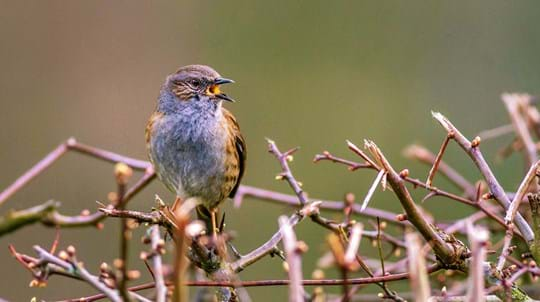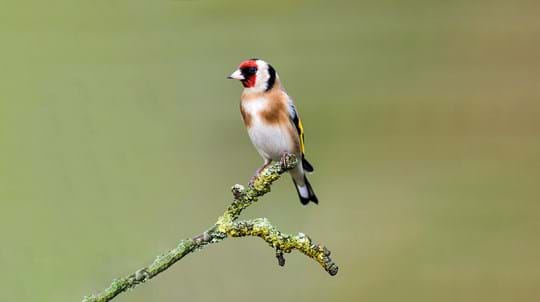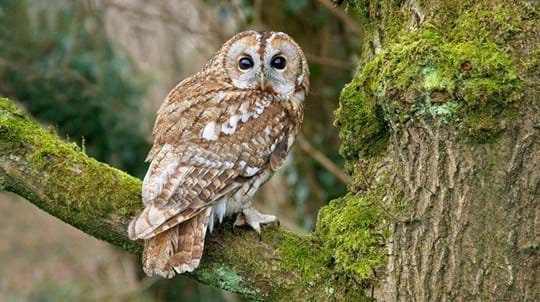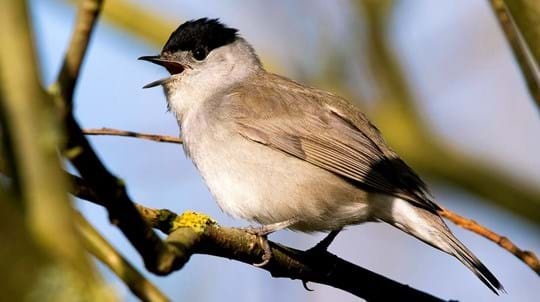Attract birds to your garden
Buy feeders, nest boxes and more from our online shop.
Visit the shop now
Content editor
For wildlife lovers, feeding garden birds is one of life’s simple pleasures. Not only are birds lovely to watch, but by supplementing their wild diet, you’re actually helping to conserve their populations. Food shortages can occur at any time of year for our feathered friends, so hanging a bird feeder in your garden all year round can be a great way of helping them out. But do you know which species are visiting your garden?
Whether you’re struggling to tell your great tits from your goldfinches or your sparrows from your starlings, don’t worry! We’ve rounded up 10 of the most common garden birds you’re likely to spot on your feeders, so you’ll be able to easily identify them when they visit in search of food. Make sure you look closely, as there is a quiz at the end to see how well you can ID them!
There’s no mistaking the smoky cap and rich brown plumage of the male house sparrow. The female is brown all over, with grey-brown underparts.
Once perhaps the most common bird found in UK gardens, there has been a severe decline of house sparrow populations since the 1970s. As lack of available food is a potential reason for their decline, providing them with a source of food is a great way to help this species.
To attract house sparrows to your feeders, stock up on peanuts and small seed mixes, such as millet.
Ever heard a curlew or car alarm sounding from your garden? You may well have been listening to your local starlings! These little mimics boast shimmering green-black feathers peppered with white speckles.
Still common in British gardens, starlings are actually in decline, although the reason why is unknown. It could be due to a decline in their food supply, so filling up your bird feeders with food they enjoy is definitely worthwhile.
Starlings aren’t particularly fussy, gobbling down everything from peanuts and suet cakes to mealworms and fruit.
A common visitor to UK gardens, the blue tit is easy to spot with its blue cap and striking yellow breast.
Blue tits are particularly prone to visiting gardens during the winter time, so stock up on bird feed during the cooler months if you're hoping to attract these pretty little guys.
These colourful characters are easily pleased, feeding on a mix of whole shelled peanuts, sunflower hearts and fat balls.
Just remember to take fat balls out of their mesh bags and place them into feeders, to stop birds getting their feet tangled.
Perhaps the most common garden visitor, it’s easy to spot blackbirds pottering around underneath feeders, hoovering up dropped seeds with their bright yellow beaks.
As the name suggests, the males are black in colour, while the females are actually dark brown. They have a distinctive yellow/orange ring around the eye.
As ground feeders, blackbirds are easily attracted to gardens with bird tables brimming with mealworms and ground feeder mix.
They’re also fond of oats, grated cheese and apples.
With a bright red face, a golden back and flashes of yellow on its wings, the goldfinch is one of our most beautiful garden birds.
Their fine bills are perfect for extracting seeds from dandelions, thistles and teasels.
They also love visiting gardens in search of a bite to eat – these charming birds can’t get enough of tiny black nyjer seeds, and are also partial to sunflower hearts.
As nyjer seeds are so tiny you'll need a special bird feeder with equally tiny holes in so that the seed doesn't fall out or blow away.
Buy feeders, nest boxes and more from our online shop.
Visit the shop nowSimilar in size to a sparrow, chaffinches brighten up gardens with a glowing pink breast and blue-grey crown. Females are an unassuming brown colour, but can be identified by their black and white wing-bars.
One of the most widespread birds in Britain and Ireland, it’s likely you’ll hear them before you see them; they have a loud, varied song.
Keep an eye out for chaffinches on the ground, hopping about under hedges and bird tables.
They like feeding on seed mixes on the ground, but will occasionally visit peanut feeders.
The largest tit in the UK, the great tit can often be found feeding alongside its smaller cousin, the blue tit.
Similar in appearance to the blue tit, great tits are easily distinguished by their black crown and white cheeks, as well as their distinctive two-syllable song.
They can be quite aggressive at the bird table and will gorge on most things, particularly sunflower hearts, whole shelled peanuts and fat balls.
In winter it will team up with other tits to form flocks in search of food.
The UK’s favourite bird, the red-breasted robin has been a fixture in British gardens for decades, perching on spades and following around gardeners as they unearth tasty worms.
Unmistakable due to its signature red breast, white belly and brown back, the robin can be seen all year round. Juveniles are mottled brown all over, with no red breast.
Robins are fiercely territorial. Their red breast is actually part of their territory defence, warding off intruders.
At the bird table, robins have a penchant for mealworms. They’ll also feed on fat balls.
Cute and characterful, long-tailed tits often arrive in large, twittering flocks of around 20 birds: there’s no mistaking their fluffy grey/pinkish feathers, round body, long tail and tiny beak!
In the evening, these fluffy little birds will snuggle up together to keep warm.
Fat balls are their favourite food, but they’re also partial to peanuts.
If you do see them enjoying the food you leave out for them, chances are they won't hang around - long-tailed tits tend to move on very quickly.
These little yellow birds are frequent visitors to bird feeders and tables, particularly when seed crops are in short supply.
One of the UK’s smallest finches, the male is bright yellow with a black cap and bib, while the female is grey with duller yellow streaks and no black cap.
The siskin has a distinctive forked tail and a fine beak, ideal for grabbing small seeds.
They enjoy feasting on sunflower seeds, peanuts and nyjer seeds.
Keep our pocket-sized identification guide to hand on your next walk.
Buy yours now
Trees woods and wildlife
Find out more about our declining woodland bird populations, and how protecting woodland habitats is more important than ever.

Blog
Kayleigh Jacobs-Rutter • 29 Apr 2025

Blog
Amy Lewis • 01 May 2020

Blog
Hannah Vickers • 17 Jan 2019

Blog
Hannah Vickers • 08 Apr 2019

Blog
Kayleigh Jacobs-Rutter • 16 Dec 2024

Blog
Amy Lewis • 28 Feb 2019

Blog
Charlotte Varela • 21 Dec 2023

Blog
Charlotte Varela • 12 May 2018
Blog
Charlotte Varela • 10 Apr 2019

Blog
Amy Lewis • 16 Feb 2022

Blog
Helen Keating • 05 May 2020